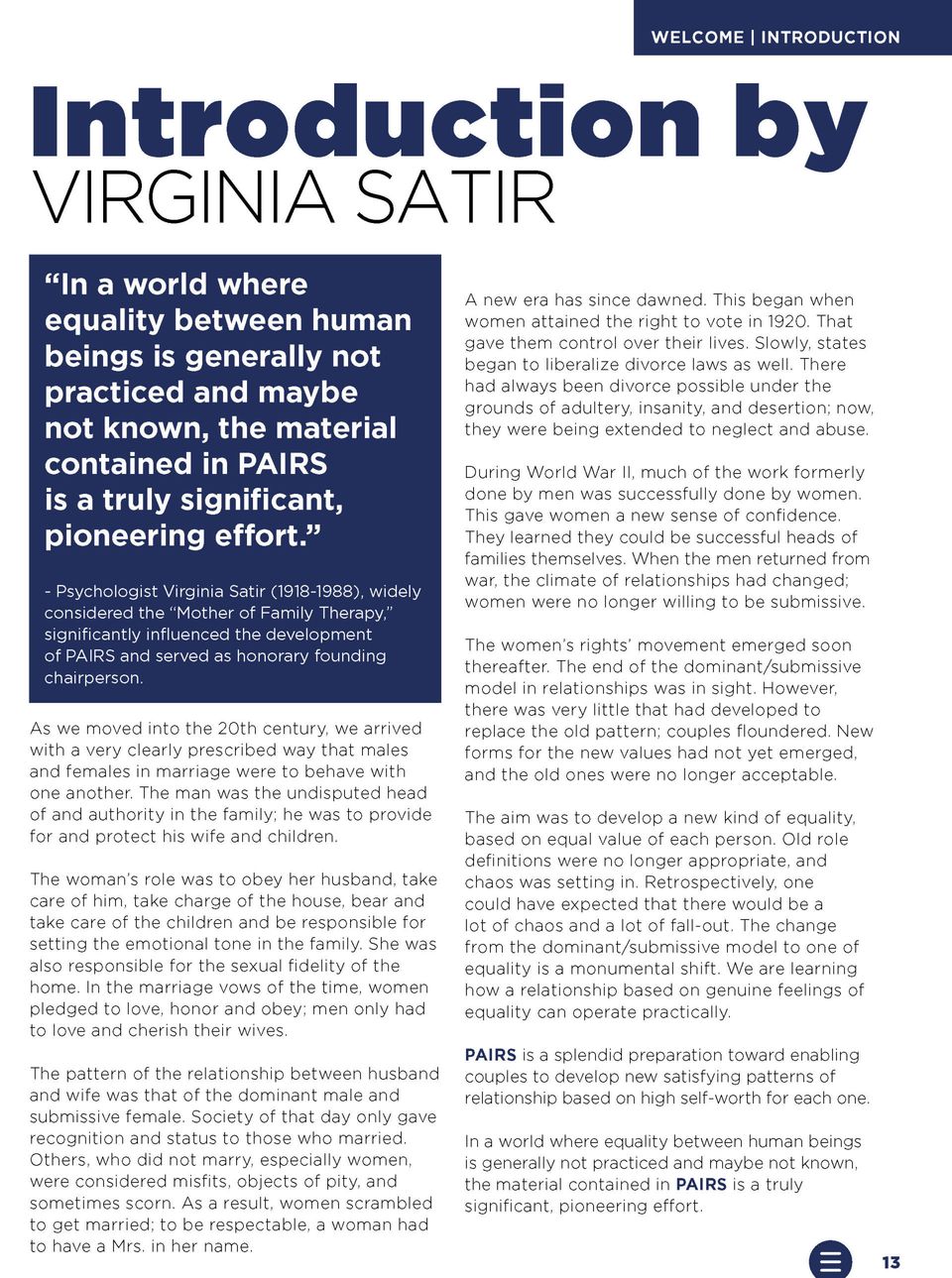As we moved into the 20th century, we arrived with a very clearly prescribed way that males and females in marriage were to behave with one another. The man was the undisputed head of and authority in the family; he was to provide for and protect his wife and children.
The woman’s role was to obey her husband, take care of him, take charge of the house, bear and take care of the children and be responsible for setting the emotional tone in the family. She was also responsible for the sexual fidelity of the home. In the marriage vows of the time, women pledged to love, honor and obey; men only had to love and cherish their wives.
The pattern of the relationship between husband and wife was that of the dominant male and submissive female. Society of that day only gave recognition and status to those who married. Others, who did not marry, especially women, were considered misfits, objects of pity, and sometimes scorn. As a result, women scrambled to get married; to be respectable, a woman had to have a Mrs. in her name.
A new era has since dawned. This began when women attained the right to vote in 1920. That gave them control over their lives. Slowly, states began to liberalize divorce laws as well. There had always been divorce possible under the grounds of adultery, insanity, and desertion; now, they were being extended to neglect and abuse.
During World War II, much of the work formerly done by men was successfully done by women. This gave women a new sense of confidence. They learned they could be successful heads of families themselves. When the men returned from war, the climate of relationships had changed; women were no longer willing to be submissive.
The women’s rights’ movement emerged soon thereafter. The end of the dominant/submissive model in relationships was in sight. However, there was very little that had developed to replace the old pattern; couples floundered. New forms for the new values had not yet emerged, and the old ones were no longer acceptable.
The aim was to develop a new kind of equality, based on equal value of each person. Old role definitions were no longer appropriate, and chaos was setting in. Retrospectively, one could have expected that there would be a lot of chaos and a lot of fall-out. The change from the dominant/submissive model to one of equality is a monumental shift. We are learning how a relationship based on genuine feelings of equality can operate practically.
PAIRS
is a splendid preparation toward enabling couples to develop new satisfying patterns of relationship based on high self-worth for each one.
In a world where equality between human beings is generally not practiced and maybe not known, the material contained in PAIRS
is a truly significant, pioneering effort.
